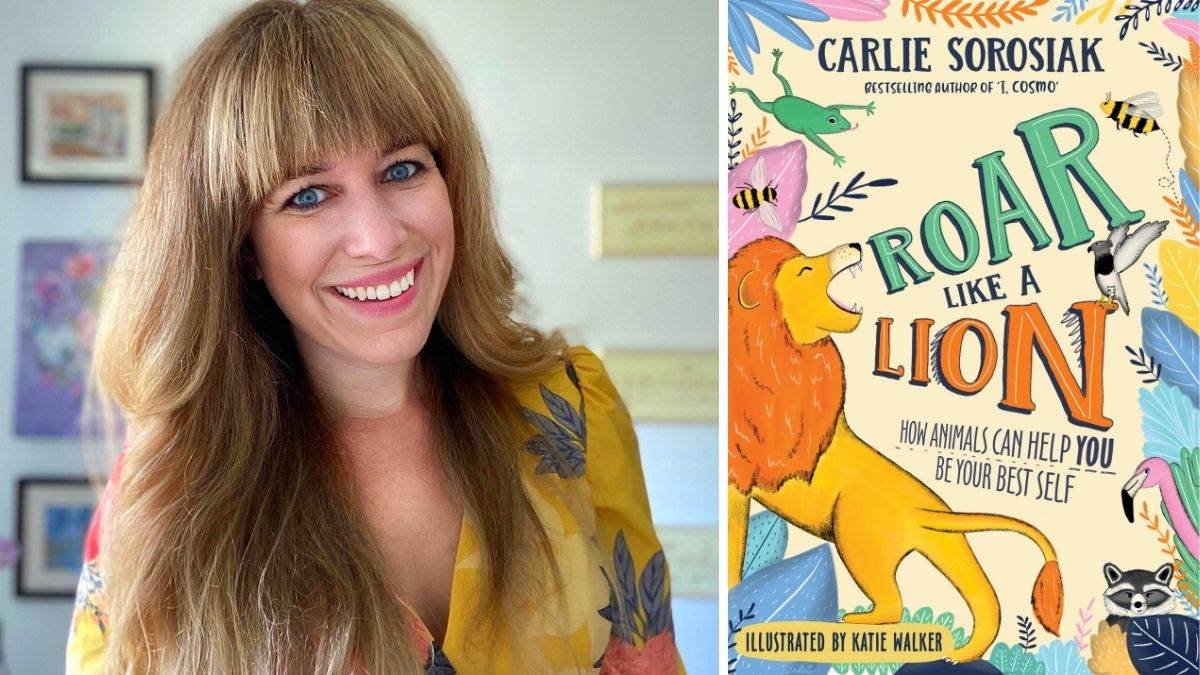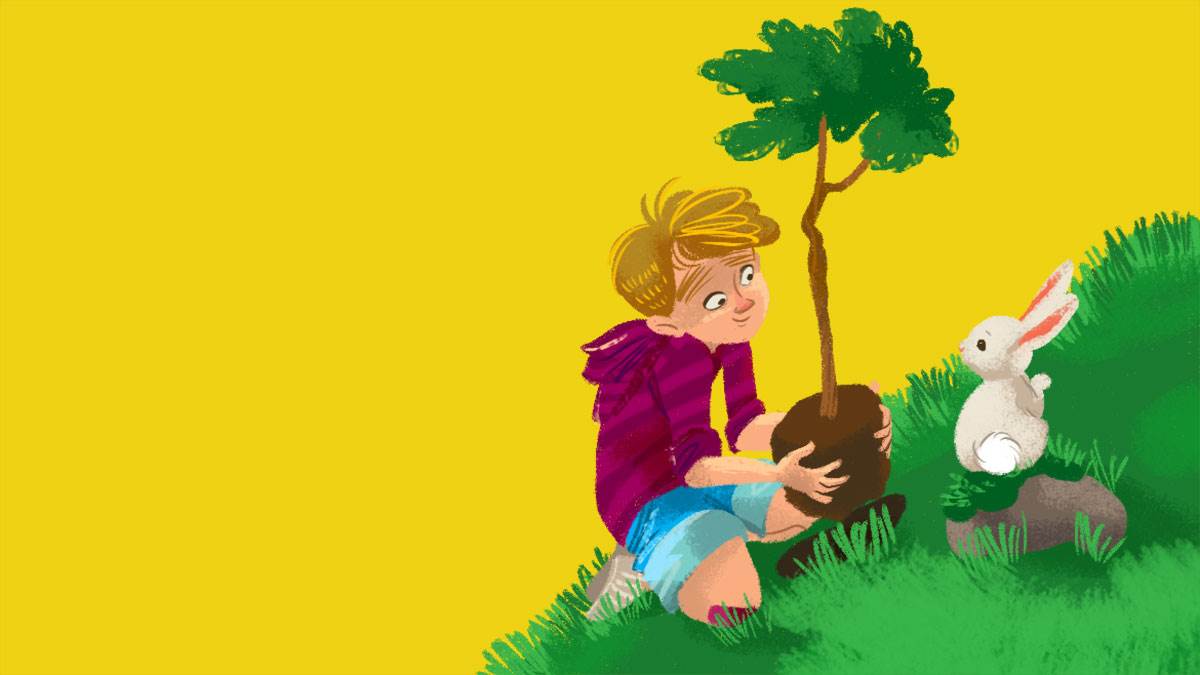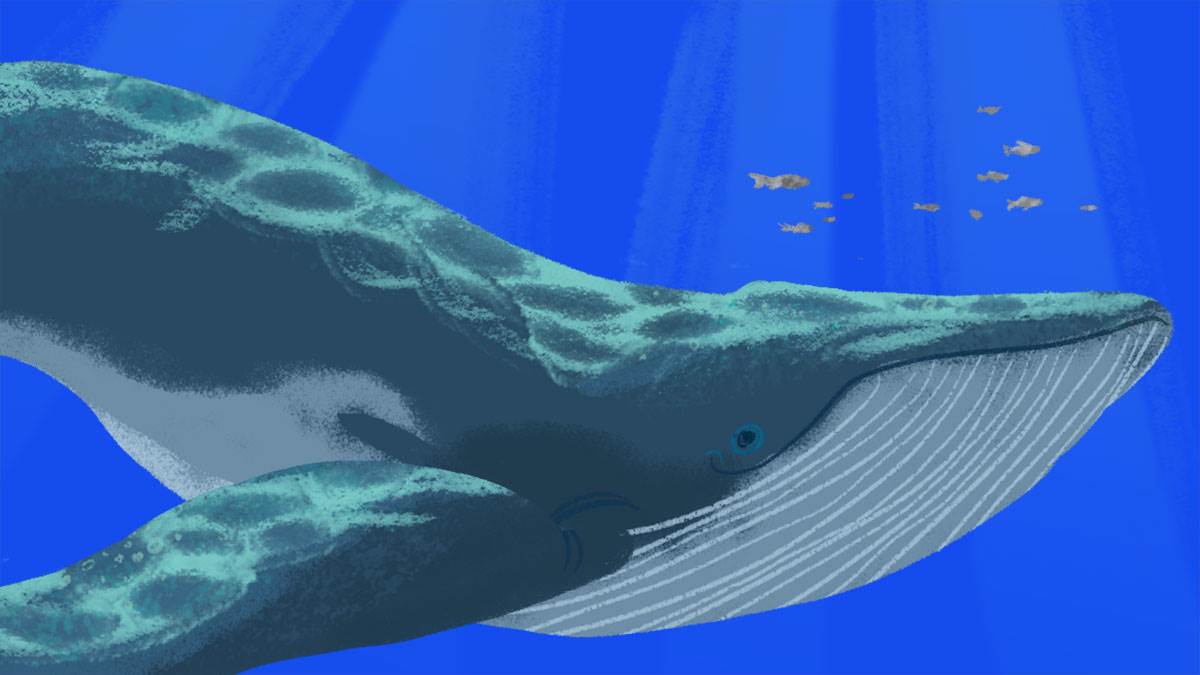What the animal kingdom can teach us about raising children
Published on: 06 October 2021
What can a duck-billed platypus tell us about our differences? And can we really learn mindfulness from a dog? Roar Like A Lion author Carlie Sorosiak believes that animals are teaching us things all the time - and they're invaluable lessons for children.
 Author Carlie Sorosiak and the cover of Roar Like A Lion
Author Carlie Sorosiak and the cover of Roar Like A Lion
A koala named Bill
When I was growing up, I sometimes took my parents’ advice. My mom and dad were – and still are – wonderful and well-meaning people, full of wisdom in many, many areas. However, at eleven years old, I was having heaps of trouble fitting in at school; I spent most Friday nights at home, reading a book, while others (I assumed!) were at the skating rink or at the movies with friends. My mom often assured me that “alone time is okay!”
The message didn’t necessarily get through to me.
I firmly believe, though, that I would’ve listened to the very same advice if a koala had given it. If a koala named Bill had told me, “Yes, Carlie, I often spend time alone in my tree, chilling out and eating eucalyptus. I’m just very good at making friends with myself,” then I would’ve said, “That’s cool, Bill. Me, too. I guess I can feel okay about myself after all.”
Now, it’s not every day that koalas knock on our windows and offer advice. But animals are always speaking to us. They’re always open about their gifts and lessons. That’s why I’ve written Roar Like a Lion: How Animals Can Help You Be Your Best Self. It’s a practical guide for kids, focusing on things like kindness, confidence, and resilience – and all the advice comes straight from the animal kingdom. Lately, I’ve been doing a lot of school visits, and every time, I ask the students, ‘Would you take advice from a pigeon? A platypus? An elephant?’ All the hands leap into the air.
There’s something about animals that inspires complete trust.
So, if you’re a parent or caregiver who’s looking to support kids on their journey towards self-awareness and self-esteem, look no further than the following animals. Here are some practical tips to help kids navigate those inevitable bumps in the road.
Teach them to embrace mindfulness like a dog
Mindfulness is such a powerful tool for kids, especially for those who often stop and fret. The kids in your life might constantly worry about things like exams, and who they’re going to sit with at lunch. You can help them by pointing out a dog’s tail – and how we can wag our metaphorical tails as fast as theirs. You don’t even have to use the word ‘mindfulness.’ You might just say that dogs allow themselves to sit and stay in the moment. They let themselves just be, without worrying so much about the past and future.
You might even encourage kids to act like a dog on a warm summer’s day: ‘close your eyes, listen to the birds, and breathe deep through your sniffer.’
 Illustration: Erika Meza
Illustration: Erika Meza
Inspire them with the story of Zippy Chippy
Zippy Chippy was a thoroughbred race horse from upstate New York, and everyone recognises him as the biggest loser in racing history. Over the course of his career, Zippy Chippy won zero races. The thing is, though, he loved to run, his tail flicking in the wind. He always picked himself up, no matter how many times he lost, and he raced with such utter joy, despite losing. You could explain to kids that sometimes it’s not really about winning at all. It’s just about running the race – and putting your heart into the things you love, as Zippy Chippy did.
Tell them about wolves and their packs (and also baboons!)
As you know, making friends can be super tricky as a kid. Losing friends can be even harder. If that happens to your child, you might tell them about wolves. When wolf packs get too large, a few wolves always venture off on their own and find or make a new pack. There is always another pack. The same goes for baboons! A group of baboons is constantly changing. And in the end, baboons and wolves find groups that bring out the strongest qualities in them.
 Illustration: Erika Meza
Illustration: Erika Meza
Explain that animals – from whales to giraffes – let themselves feel all the things.
Often times, it’s easy for kids to embrace happy emotions, but when those trickier emotions (like sadness) come knocking, they might shut down. To combat this, you can share the story of Tahlequah the whale, who let herself feel grief after her calf’s passing. You can explain that animals like giraffes, elephants, and polar bears never hide their feelings; they never bottle them up. They know it’s much healthier to live those emotions out loud.
Encourage them to embrace their differences like a platypus.
Lots of kids feel out of place. They feel like they’re odd or strange – like they don’t fit in. As adults, we know that differences can be the very things that shape kids into strong, brilliant people. To help kids understand this, show them a picture of a platypus! Early explorers thought that the platypus was so extraordinarily weird-looking, they didn’t even believe it was real. And yet, it’s the platypus’s differences (the frog-like webbing between its toes, for example) that allows it to thrive in its environment.
Every child should see that they’re worthy of kindness; that they’re a brave, brilliant, unique individual. I hope that these tips, and the animals in Roar Like a Lion, can help show them.
Roar Like a Lion by Carlie Sorosiak, illustrated by Katie Walker | Paperback | £9.99 | October 2021.
Carlie Sorosiak is the bestselling author of I, Cosmo, My Life as a Cat and two novels for young adults. She teaches creative writing at the Savannah College of Art and Design, and lives in Atlanta, Georgia with her husband and their American dingo. Follow Carlie on Twitter.
Topics: Animals, Environment, Mental health, Nature, Features





